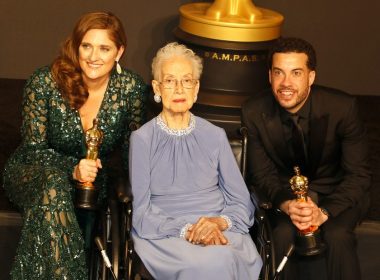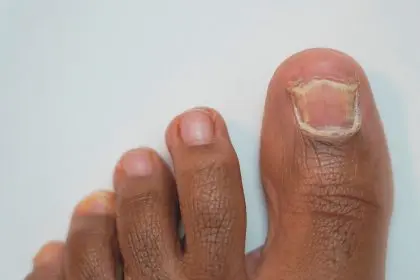[jwplatform LF46beAr]
National Geographic Channel, Academy and Emmy-winning producers Brian Grazer, Ron Howard and Michael Rosenberg of Imagine Entertainment; and Academy Award-nominated and Emmy-winning producer Justin Wilkes and Dave O’Connor of RadicalMedia have joined forces to launch viewers farther into outer space than ever before with the global event series “MARS.” It’s not surprising the world leader in exploration and these Hollywood heavyweights would seek the counsel of Mae Jemison, who served six years as a NASA astronaut and was the first woman of color in the world to go into space aboard a joint space shuttle mission with the Japanese space agency.
“Brian [Grazer] and I, along with the guys at Radical, had this ambitious idea, which was to create a documentary about the quest to go to Mars but also bring it to life in a really dramatic and cinematic way,” said executive producer Ron Howard. “The offer to the audience will be information meets vivid and experiential filmmaking. Nat Geo’s ambition was high, and we are really honored and thrilled to try and meet that challenge.”
The new National Geographic TV series is set in 2033, and the first human mission to Mars is on its way. Their mission? Make Mars home. The global miniseries event MARS blends feature film-caliber scripted elements set in the future with documentary vérité and interviews with today’s best and brightest minds in modern science and innovation, illuminating how research and development are creating the space technology that will enable our first attempt at a mission to Mars. The global event series premieres this November on the National Geographic Channel.
Trained as an engineer, social scientist and dancer, Jemison, a medical doctor, was the Area Peace Corps Medical Officer for Sierra Leone and Liberia. Jemison founded two technology companies and the non-profit Dorothy Jemison Foundation for Excellence which designs and implements STEM education experiences. A member of Fortune 500 companies’ boards, the National Academy of Medicine and the National Women’s Hall of Fame, Jemison was voted as one of the top seven women leaders in a presidential ballot national straw poll and was the first astronaut to appear on Star Trek.
Here, she shares her opinion on Nat Geo’s “Mars” and how parents can encourage kids to embrace STEM.
What’s your role with Nat Geo’s “Mars”?
National Geographic has put together an incredible series, which is centered on traveling to Mars. They have been forward thinking and creative with both the casting of this fictionalized mission as well as coordinating the interviews. It is exciting.
My role has been one that evolved over time, advising cast members about people in the space program, behavior, how to move things along, crew operations … a range of things regarding the production of the series.
There are huge efforts across the country to recruit boys and girls of color to participate in STEM studies. How do you reach young people?
The issue is how do you make opportunities for people to develop to their full potential? I will tell you a secret that is not so secret. Children love science; boys, girls, all kids love science. They wouldn’t pick up a bug; the snails and all kinds of things, if they didn’t, right? Kids want to know everything about the world. They explore. They experiment. They do all these things.
How do we educate them? And, how do adults respond to them? The best way to get students involved in science and want to follow either science careers or incorporate it in their lives or to achieve science literacy is to expose them to the various jobs in STEM. It’s broad from biologists to electricians to nanotechnologists to building fusion engines. It’s a wide range of things.
Children live up or down to our expectations. It means that we as adults and teachers have to expect them to achieve. We must put the money in the classrooms. There are some people who believe they’ve exposed their children to science simply by giving them an iPhone or a smartphone, or because they have tablets in some schools. That’s not really science. Science is hands-on. Have them grow the potato plant in a cup and measure how long it takes for the skin to sprout the eyes of the potato and measure how fast they grow. To make things happen, you must have materials in the classroom.
Experience is how students learn that science is not mysterious. By having them engage in science, it removes some of the mystery. Most of this revolves around adults taking advantage of this prodigious construct that young folk have for learning and their interest in the universe around them. Sometimes parents squash student’s interests because they are afraid of science or math. So they don’t participate. You don’t have to know the answers to engage kids; you just have to let them know it’s important. Go to the museum and the zoo with them. Do experiments with them at home. Baking is science. I consider myself a good cook, but I didn’t learn how to bake until I realized it was chemistry.
National Geographic will extend the MARS storytelling in an unprecedented cross-platform effort, including a six-part digital companion prequel series. Before MARS, which will launch prior to the premiere, is an extensive digital virtual-reality experience at www.MakeMarsHome.com. There will also be the MARS Experience installation in New York City this October. Further, MARS will be the November cover story of National Geographic magazine and will be featured in a standalone book, “MARS: Our Future on the Red Planet,” on sale October 25. The NG Kids Book, “MARS: The Red Planet,” went on sale Sept. 27. There are media and educational materials for kids; a touring NG Live speakers series; and ongoing MARS coverage on nationalgeographic.com.















